The Australia Institute (TAI) used to talk sense on immigration.
In 2015, TAI published an excellent research paper calling for a national debate on Australia’s future population:
Since the Sydney Olympics in the year 2000 the population of Australia has grown by 25 per cent. In fact, since the Sydney Olympics, Australia’s population has grown more than the entire population of Sydney at that time…
Each year our population increases by around 400,000—a new Canberra every year…
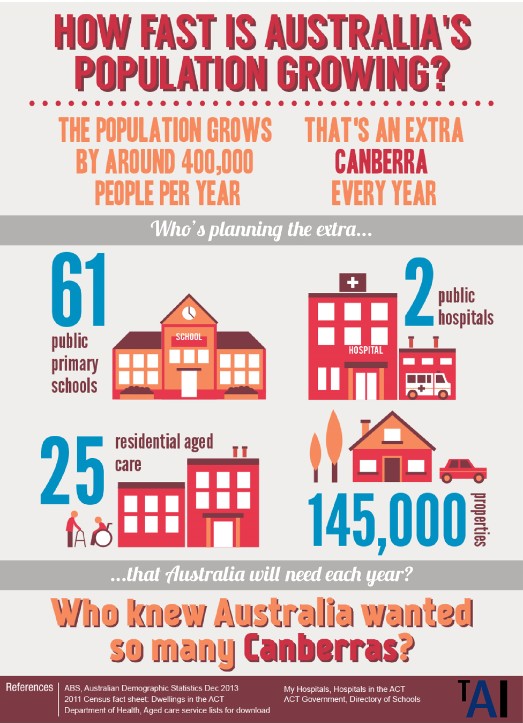
Despite our rapid population growth being at historic rates and among the highest in the world, it is all too rarely discussed…
Australia needs serious debate around what our population policy should be and how to plan for our future population.
Former TAI chief economist, Richard Denniss, raised the alarm about Australia’s mass immigration policy in April 2018 when Australia’s net overseas migration (NOM) was ‘only’ 260,000—well below the 2024 level of 340,000:
Anyone planning an event knows that it makes a lot more sense to put the tables and chairs out before the guests arrive lest you bump into people and knock over the vases…
Australia’s population has grown by the equivalent of an entire Sydney since the Sydney Olympics but obviously our infrastructure has not.
Big business loves big population growth because with a population growing by around 2%, the fastest in the OECD, customer numbers grow by around 2% a year without even trying.
For our big banks, retailers, airlines, telcos and petrol companies high levels of immigration growth mean high levels of profit growth.
Governments love rapid population growth as well as they have come to treat new arrivals more as new taxpayers rather than as new citizens who deserve the level of public services and amenities Australians once took for granted.
Put simply, successive governments, state and federal, have used rapid population growth as an opportunity to cut government spending per person while bragging, year after year, about record levels of total spending. It’s a cynical trick…
The Australian community has never been as keen. Not because they are all racist… but because with long waits to get into hospitals, clogged roads, crowded trains and dwindling amounts of public space they simply couldn’t see the plan to accommodate even more.
But the public’s inability to see the plan doesn’t mean there isn’t one… Rapid population growth without a similarly rapid increase in infrastructure spending delivers better budget outcomes at the expense of worse public services.
Rapid population growth delivers better customer numbers without any need to deliver better customer service. And rapid population growth puts downward pressure on wages without the need to train your existing workforce.
If we want to continue to grow by almost 2 million people every five years then we need to start building the infrastructure they will need decades before they arrive, not decades after.
Richard Denniss gave a similar sermon on Sydney Radio questioning Australia’s then-high (but much lower than now) immigration-led population growth:
Population growth costs a lot… If you double the number of citizens then you double the number of teachers and double the number of nurses. It’s pretty simple math.
But of course, you don’t have to double them if you gradually plan to lower the number of services. If you are happy for us to gradually lower the number of services in our health system, our aged system, if you are happy for congestion to gradually get worse, if you are happy for the amount of green space per person to decline, then you can do what we do.
But the trick is at the moment is every budget – and all governments do this – every budget the minister says “I’m spending a record amount on health”. Well, of course you are, we’ve got a bigger population than we’ve ever had before.
Every year has to be a record. But, their own data shows that on a per person basis, it’s just not keeping up.
Sadly, TAI has abandoned rigour and balance on immigration in favour of wokeism.
In late 2023, TAI senior economist Matt Grudnoff published propaganda claiming that “Australia is not being flooded by migrants”:
Don’t be scared by claims Australia is being inundated by migrants
Lately there has been some very weird discussion about immigration. People have been claiming that it is at record levels and there have been scary looking graphs going around showing a record number of migrants in the past year. One popular AM talkback program in Sydney, today screamed “Australia is being crippled by migration.”
Yes there has been a large spike recently but just focusing on this ignores the fact that we saw a massive fall during COVID…
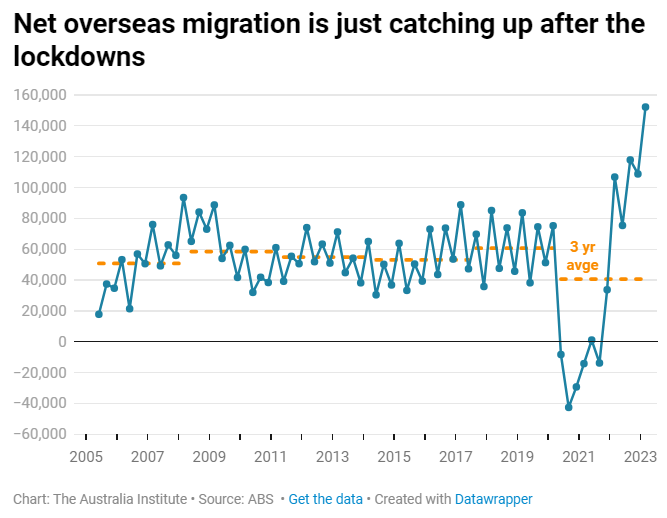
What is happening is that net migration has spiked up because people are coming back after leaving during COVID. This does not appear to be the case of a sudden new increase in immigration, but rather the unwinding of the COVID period.
There is always worth having a discussion about levels of migration – and the need to ensure governments have plans inplace to deal with the infrastructure needs that a larger population entails.
I noted at the time that Grudnoff had been deliberately disingenuous by starting the above chart in 2005, when Australia’s NOM had more than doubled versus the historical average.
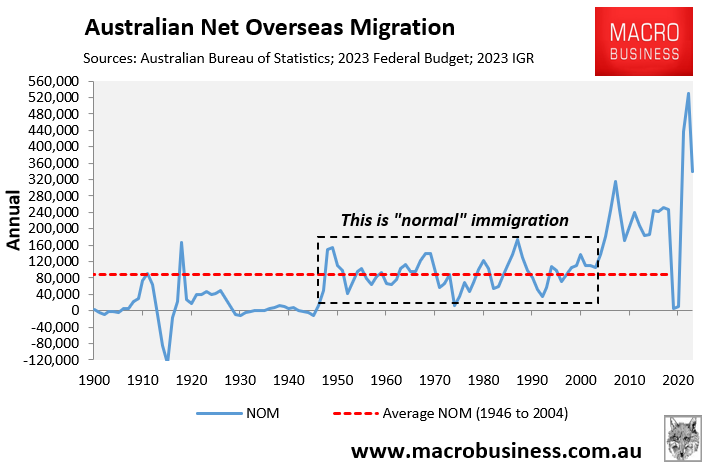
The reality is that Australia has been “flooded with migrants” since 2005, with recent levels literally off the charts.
Grudnoff published another article attempting to debunk the view that immigration levels are too high or have contributed to the housing crisis.
The Coalition linking immigration to the housing crisis makes little sense. The housing crisis has not just appeared in the last 2 years, it has been getting worse for more than two decades…
But what about the claim that immigration and the population have been rapidly growing? It is certainly true that net migration has been higher in the last few years. But that was after an extraordinary period where the boarders were shut, we saw more people leaving the country and entering it, and the Australian population went down…
In fact Australia’s population is still lower that it would have been expected to be had it grown at the same rate as it had been before COVD.
We don’t have a “big Australia” and migrants aren’t taking our homes or our jobs.
The problem of housing affordability is due to a lack of supply from the public sector of low-cost housing and rental properties, mixed with tax breaks for investors that has turned Australia’s housing market into a speculators paradise.
Grudnoff was back again last week with more propaganda:
Population growth is in the news again. The usual suspects are trying to whip up a scare campaign about immigration…
Actual population is lower than it would have been if the Covid pandemic had not occurred…
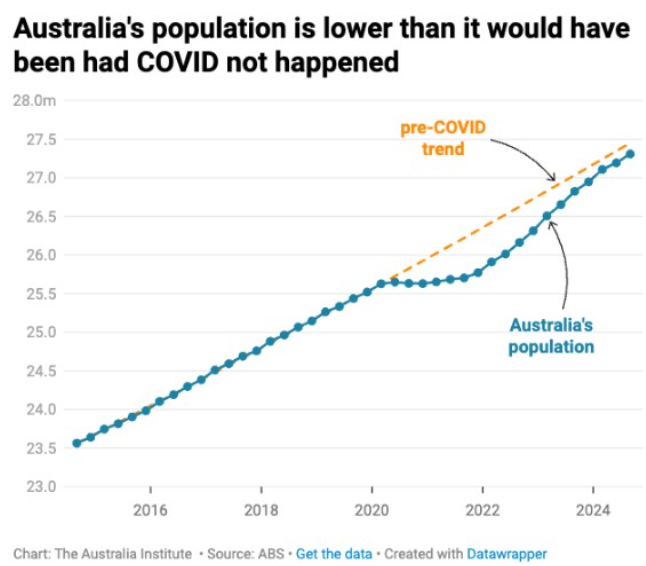
The idea that population is growing at a faster rate than housing is also not supported by the data.
In the past 10 years, the population has increased by 16 per cent. That means, for Australia to maintain the same average number of people per dwelling, the number of dwellings needs to increase by at least 16 per cent. But over those 10 years the number of dwellings rose by 19 per cent…
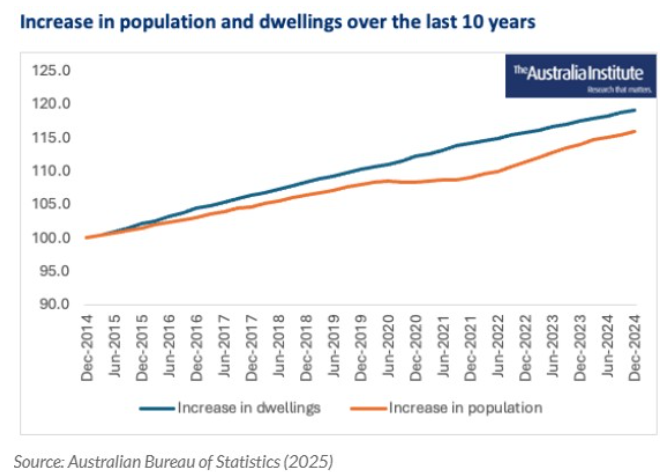
We are building homes at a faster rate than the population has increased.
Scare campaigns about immigration are as old as history. But the latest version of them falls apart when subject to the evidence.
To say that this analysis is asinine is an understatement.
First, the data to end-2024 shows that Australia’s total population has caught up to the strong pre-Covid trend, whereas the working age population—i.e., those that require housing—has grown stronger than the pre-Covid trend:
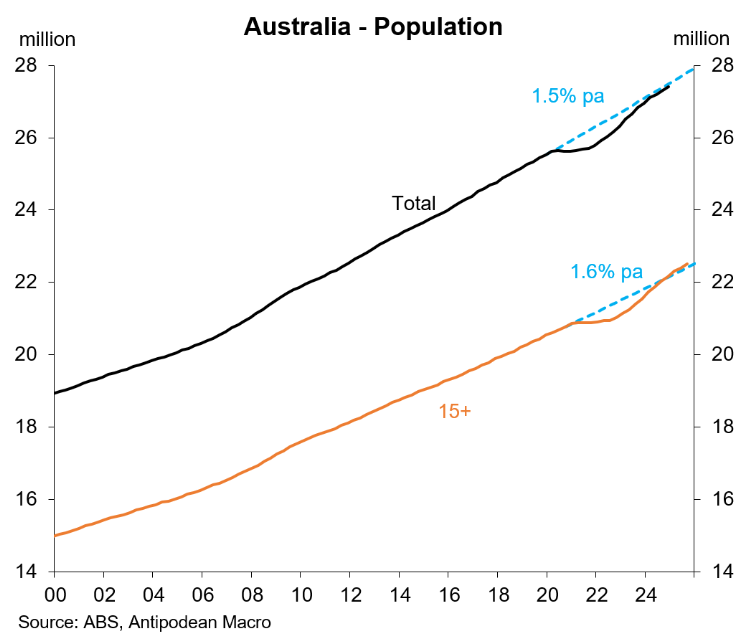
Moreover, there were nearly 2.5 million temporary visas (excluding visitors) on issue in Australia as of Q2 2025, which was over half a million more than the pre-covid peak:
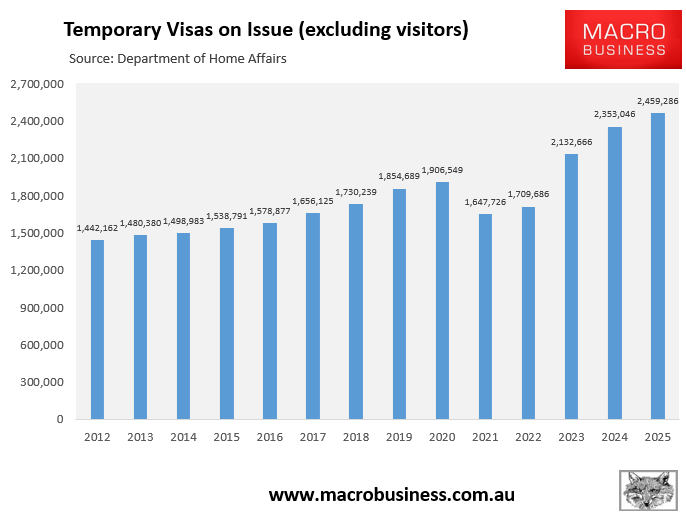
Second, Australia’s housing crisis has been running for well over a decade. Heck, as shown above, TAI itself raised the alarm about excessive population growth in 2015.
In the first 25 years of this century, Australia’s population ballooned by 45% (around 8.5 million), the fastest growth in the advanced world:
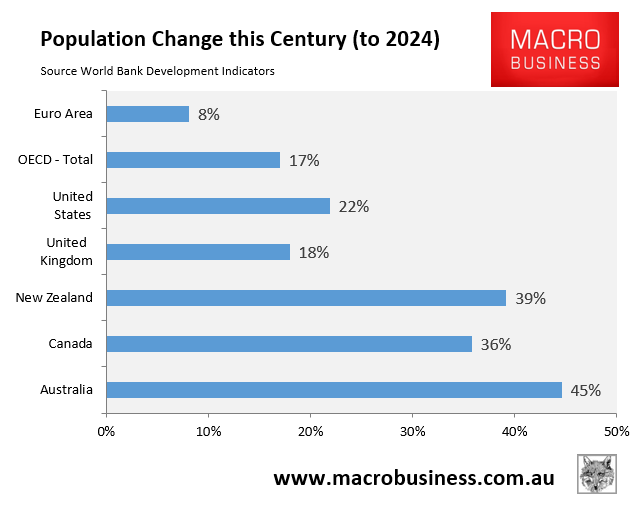
To argue that such extreme population growth hasn’t pressured the housing market is asinine and defies basic economics and common sense.
Third, TAI’s housing data is cherry-picked. Australia’s population has run ahead of housing supply ever since immigration more than doubled in the mid-2000s.
The following chart from AMP chief economist Shane Oliver illustrates that after immigration more than doubled and annual population growth jumped by 150,000, Australian housing became structurally undersupplied:
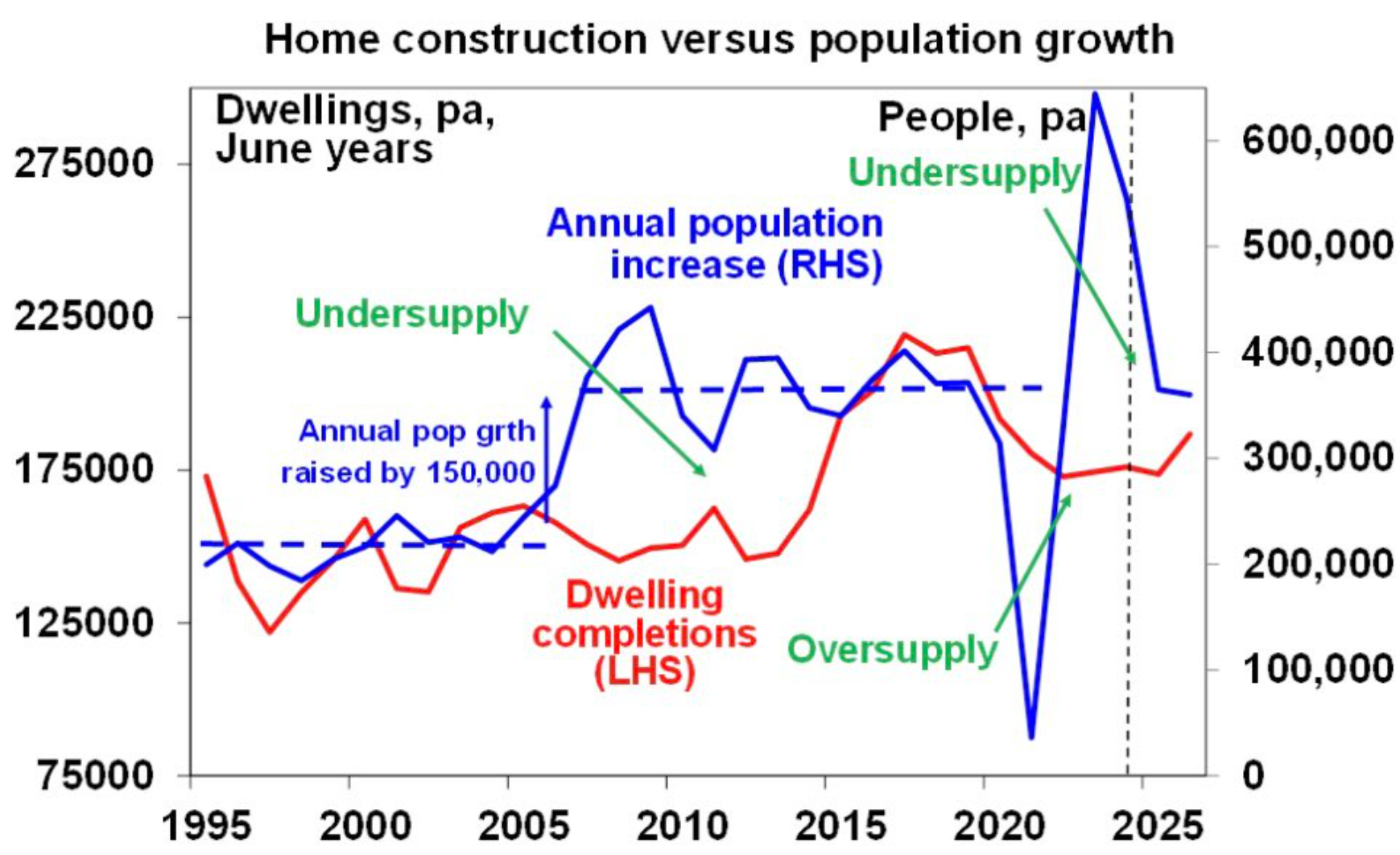
“Australian housing is chronically undersupplied”, Oliver wrote in July.
“This has been the case since the mid-2000s when immigration levels, and hence population growth, surged and the supply of new homes did not keep up. Our assessment is that the accumulated housing shortfall (the green line in the next chart) is around 200,000 dwellings at least and possibly 300,000 depending on what is assumed in terms of the number of people per household”.
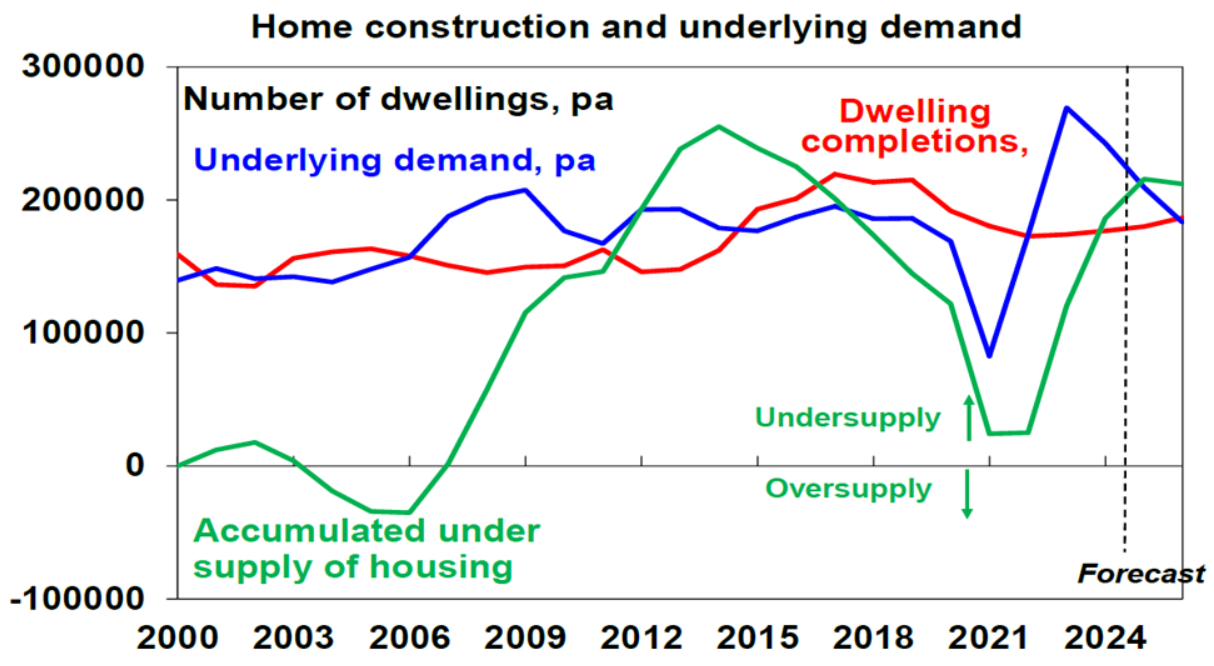
“The economic reality is that when underlying population driven demand for housing exceeds its supply prices rise and that is what we have been seeing for the last twenty years. The capital gains tax discount, negative gearing and foreign demand may have played a role, but they have been a sideshow to this demand/supply imbalance”, Oliver wrote.
The latest State of the Housing System report from the federal government’s National Housing Supply and Affordability Council (NHSAC) forecast that new housing supply will remain below population demand over the five-years to 2028-29, resulting in an additional cumulative undersupply of 79,000 homes.
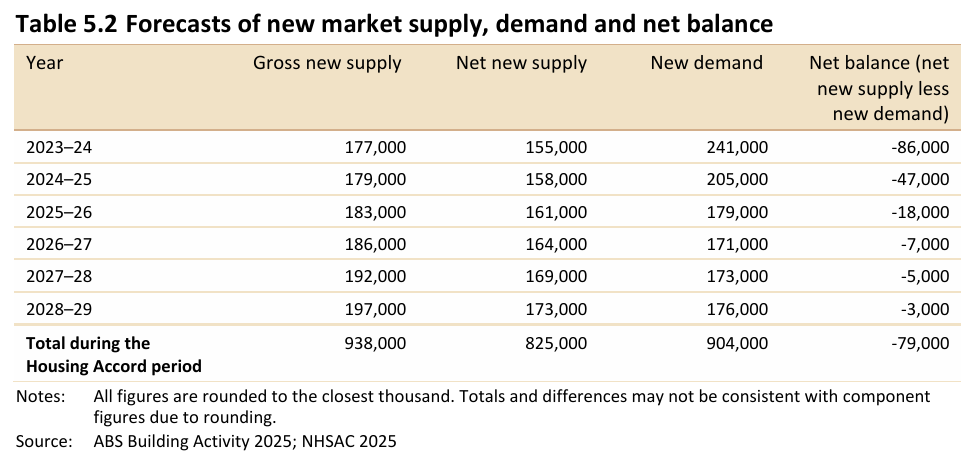
The NHSAC report warned that ongoing strong immigration, combined with poor supply, will continue to pressure renters and result in more homelessness and overcrowding.
“The excess of new demand relative to new supply over the Housing Accord period will worsen the existing undersupply of housing in the system and add to affordability pressures”, the NHSAC report said.
“Rental housing will remain scarce for households across the income spectrum as the vacancy rate remains below its historic average”.
“A lowered vacancy rate will absorb some of the unmet demand, and some will add to the homeless population. Some may be absorbed by suboptimal types of shelter not captured by traditional measures of the housing stock, such as caravan parks, hotels and emergency shelters. Most will be absorbed by households not forming that otherwise would have, resulting in larger households and more instances of overcrowding”, NHSAC warned.
However, NSAC’s sensitivity analysis, buried at the back of its report, projected a surplus of around 40,000 homes after five years if population growth is just 15% less than forecast.
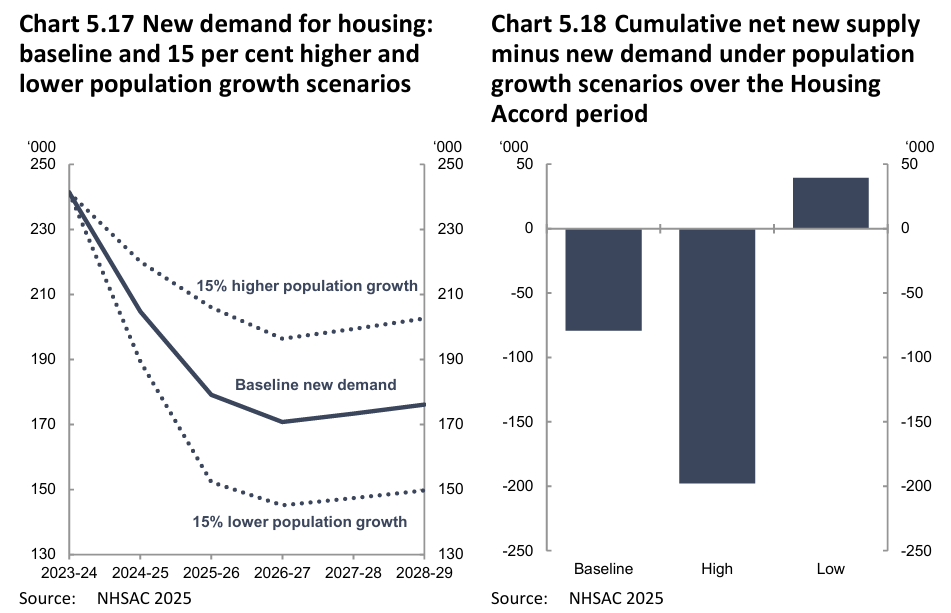
Therefore, NHSAC’s report clearly stated that the primary solution to Australia’s housing shortage is to reduce net overseas migration to a level below the nation’s capacity to build housing and infrastructure.
Why has Matt Grudnoff and TAI ignored NHSAC’s findings?
Increasing the population so aggressively is irresponsible without the appropriate housing and infrastructure to support it. Australia has been doing this for 20 years, as noted previously by TAI.
The 2024 Population Statement from Treasury’s Centre for Population projected that Australia’s population will increase by 13.5 million in just 40 years.

Source: Centre for Population (December 2024)
This projected 13.5 million population increase will be driven by a permanently high net overseas migration of 235,000 per year, more than doubling the 90,000 average net migration in the 60 years after World War II.
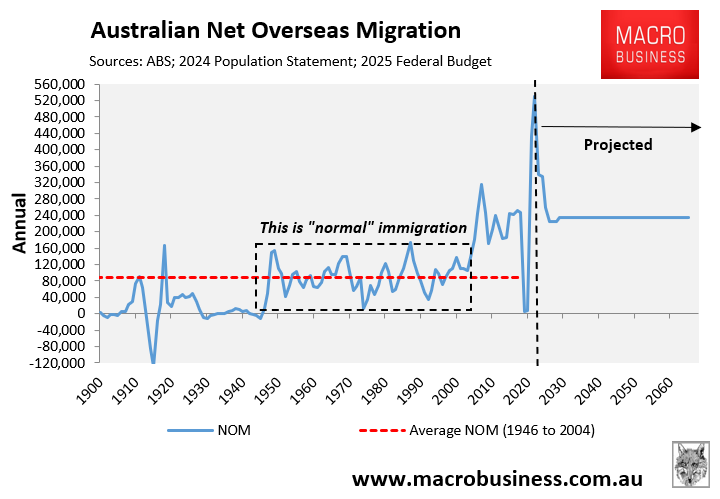
This expected population rise of 13.5 million is equivalent to adding another Sydney, Melbourne, and Brisbane to the country’s current population in just 40 years!
To maintain, let alone improve current living standards, the housing, infrastructure, water supply, and energy embedded in these three large cities would have to be replicated in just 40 years.
Such rapid population growth will necessarily increase the cost of housing in Australia.
Matt Grudnoff should acknowledge that lowering immigration is the most effective policy to ‘solve’ the housing shortage.
Lower immigration directly benefits tenants by reducing rental inflation. It also benefits first-time buyers by making it easier to save a deposit (because they are paying less in rent) and curbing house price inflation.
Sadly, TAI has morphed from a think tank that once used sound evidence to fight the class war to a virtue-signaling think tank fighting a fake culture war.
Meanwhile, Australian renters are suffering severe financial stress, being forced to live in group housing, or being thrown onto the streets by the largest immigration program in this nation’s history.
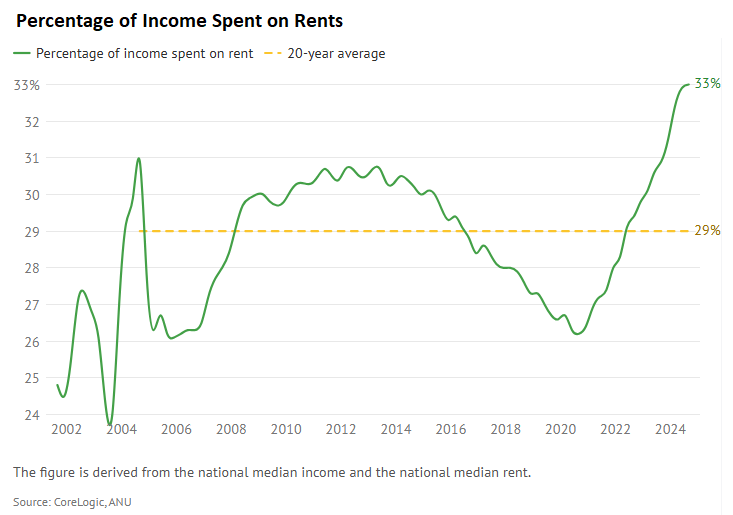
Asking rents have exploded amid the immigration deluge and tenants are paying a record share of their incomes on rent.
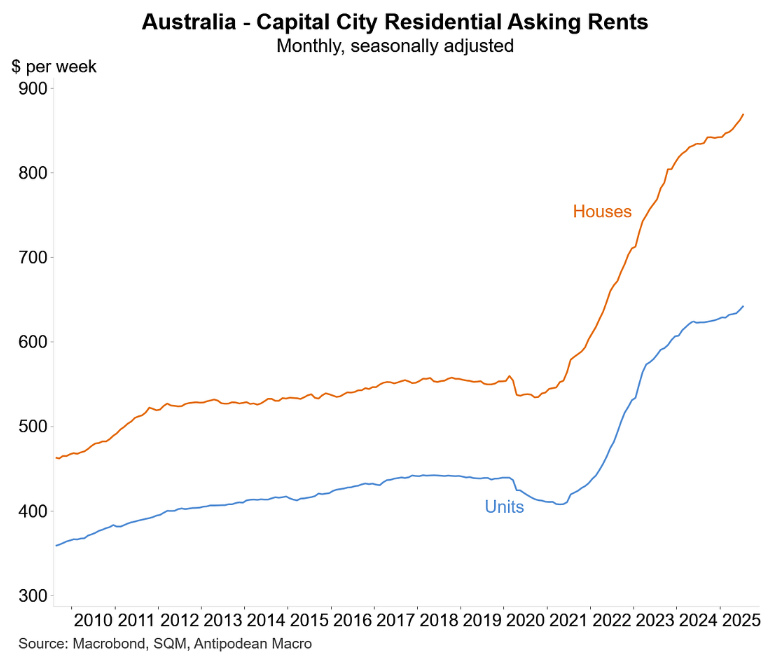
According to Cotality’s latest Quarterly Rental Review, rents have increased by 43% nationally over the past five years. As a result, the median asking rent paid by tenants has increased by more than $10,000 since the beginning of the pandemic.
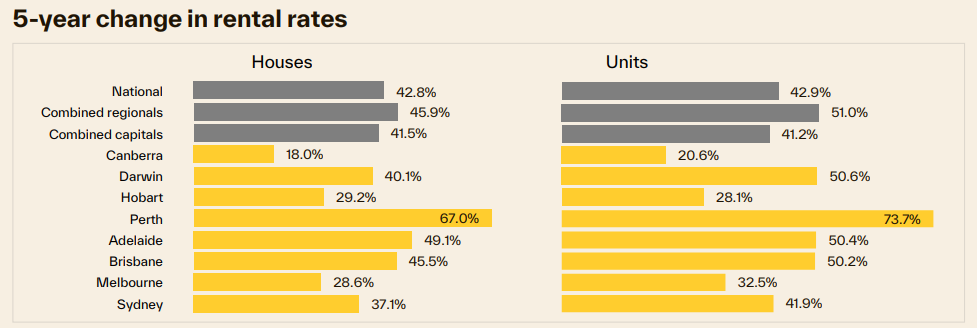
Source: Cotality
But we aren’t allowed to mention the giant immigration elephant trampling the working class because it’s racist, according to Grudnoff.
Canada was able to have a sensible discussion on immigration by linking excessive volumes directly to the rental crisis, infrastructure, and living standards.
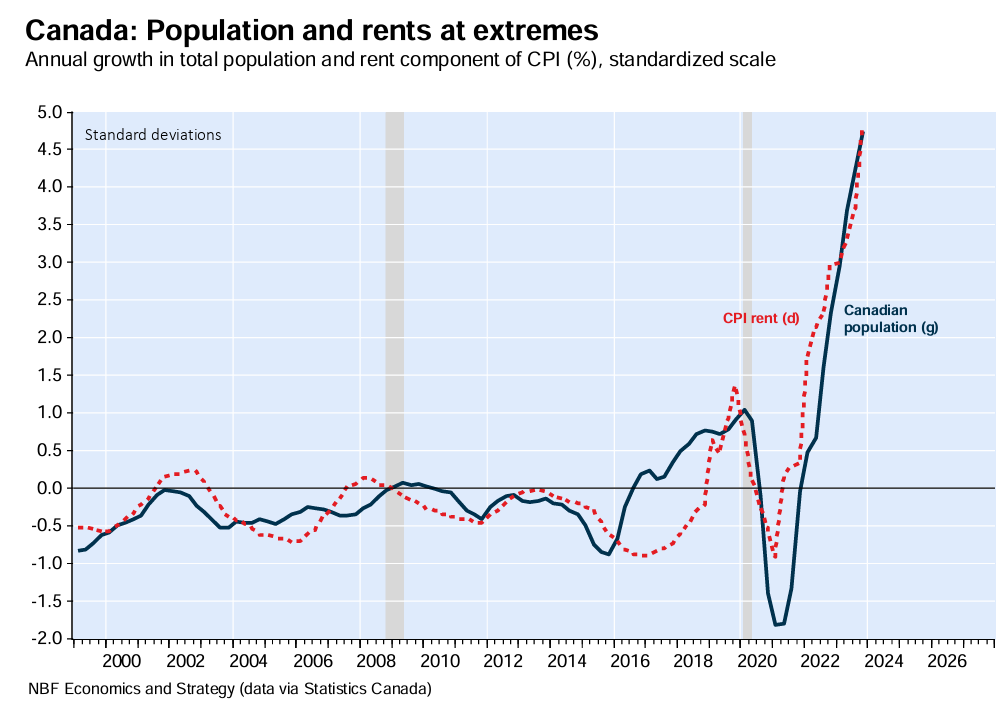
As a result, Canada implemented a three-year population freeze in mid-2024.
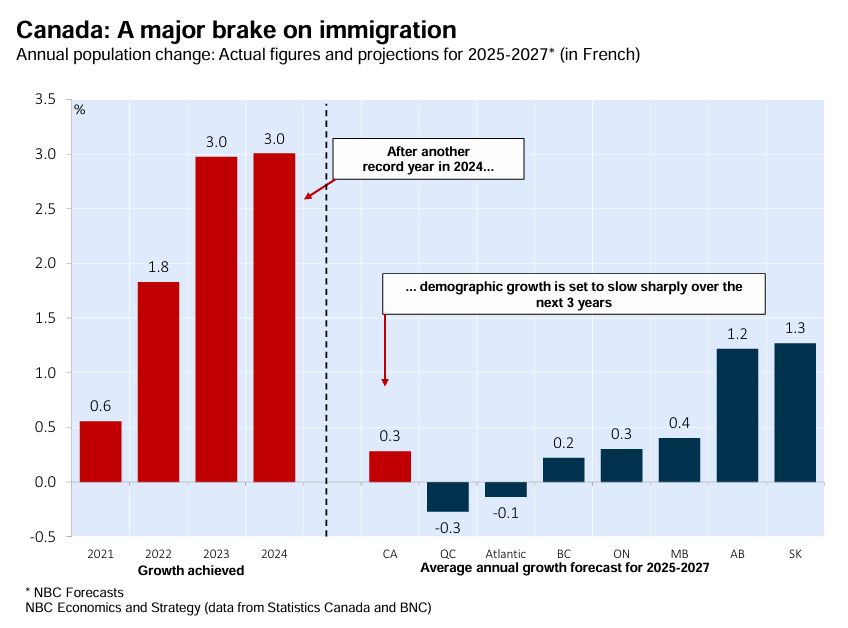
And Canada’s net migration has plummeted:
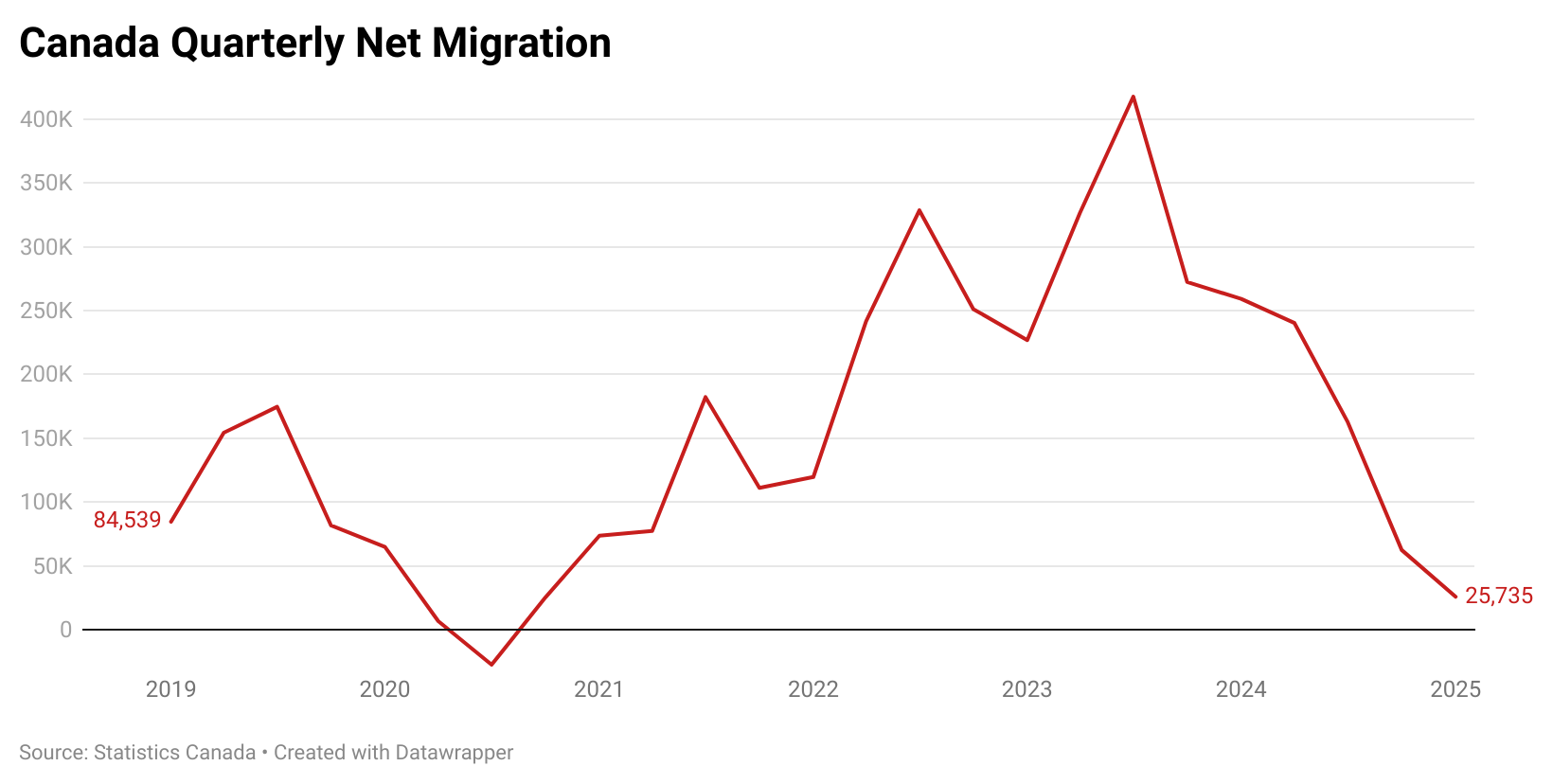
Why can’t Australia have such a discussion on immigration levels and the quality of the intake? It is because of people like Matt Grundoff.
It is disappointing to see what was once one of my favourite economic think tanks turn into a fake left virtue-signaling joke.
Bring back Clive Hamilton’s Australia Institute.

